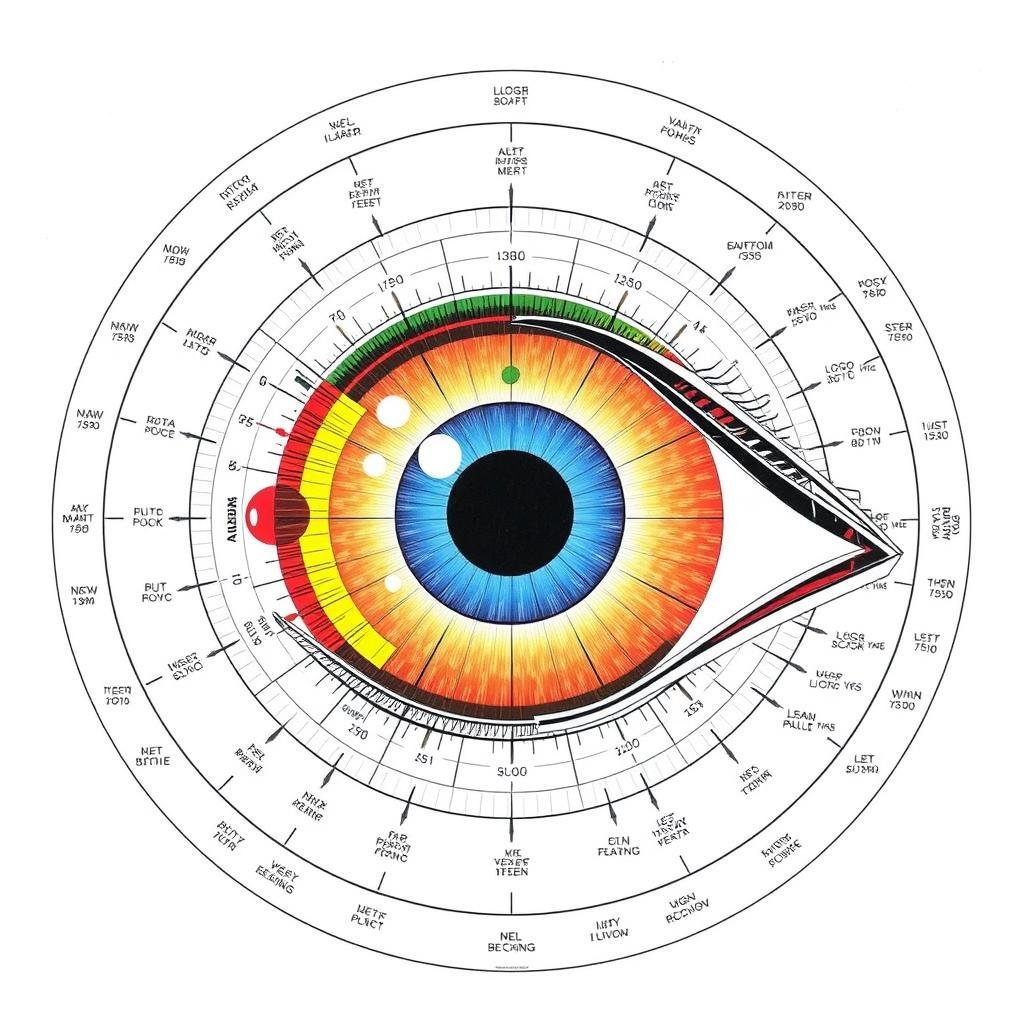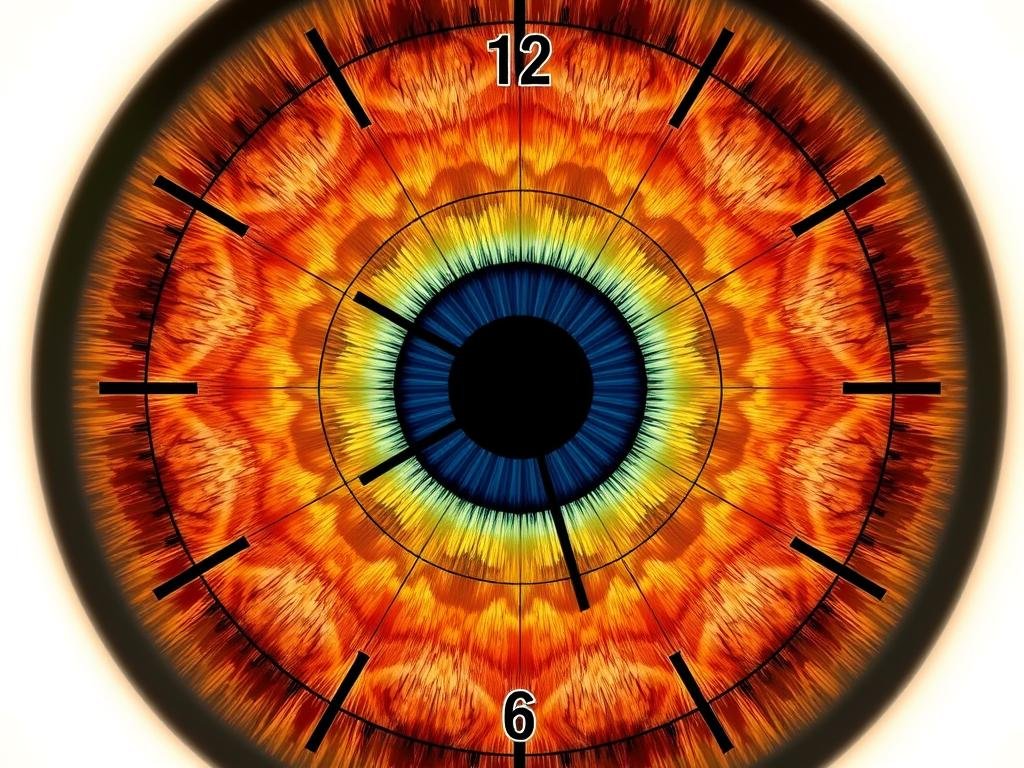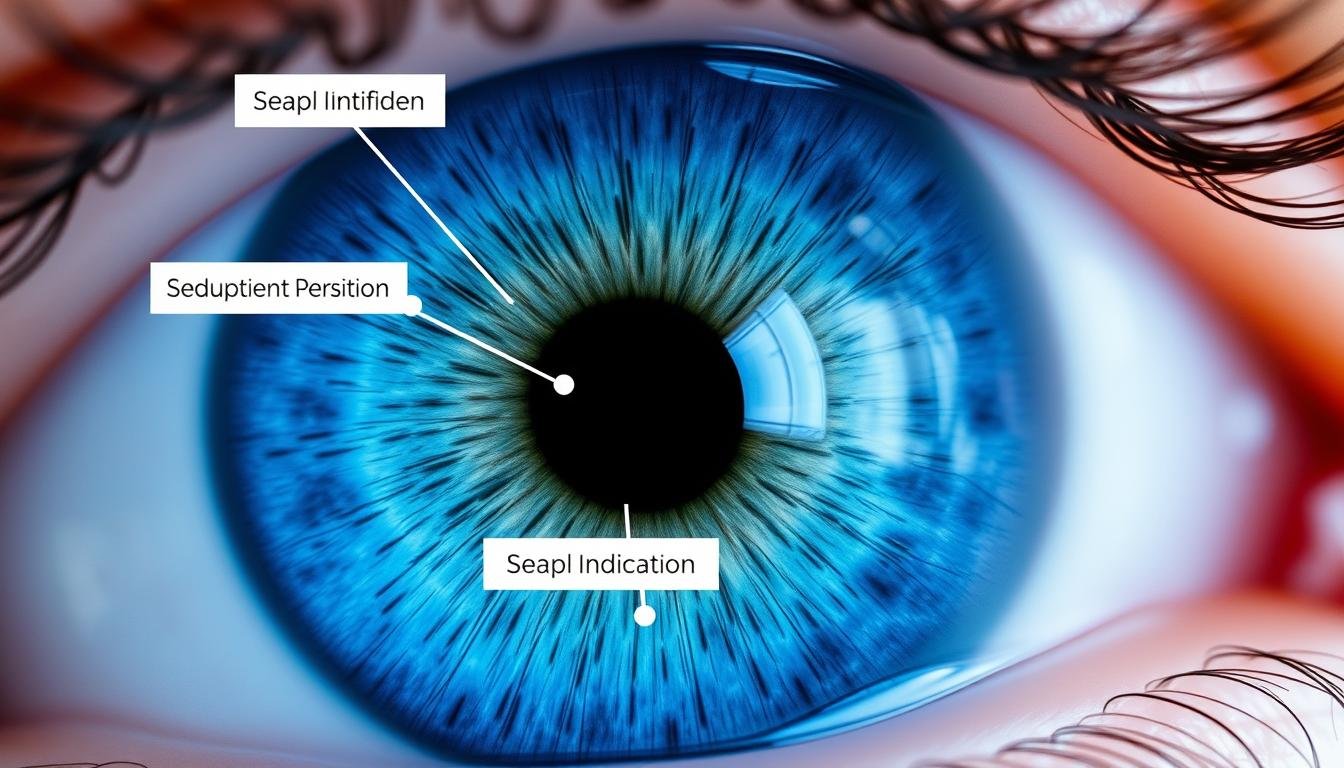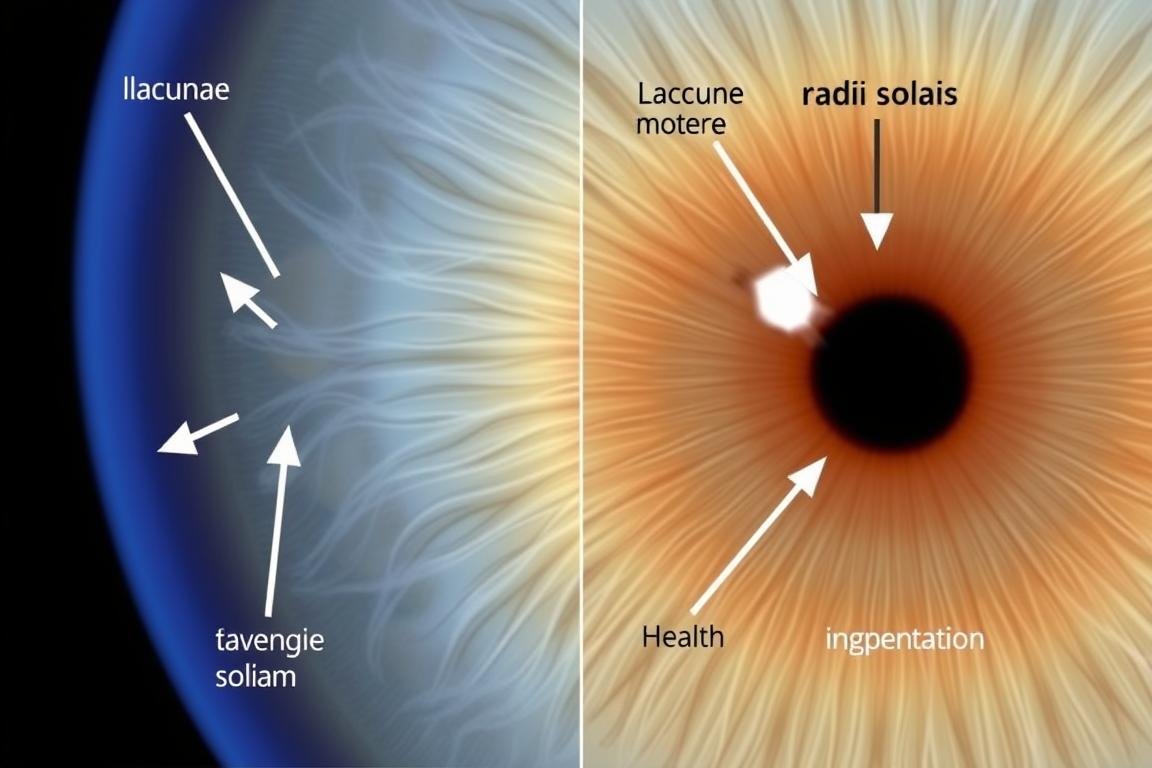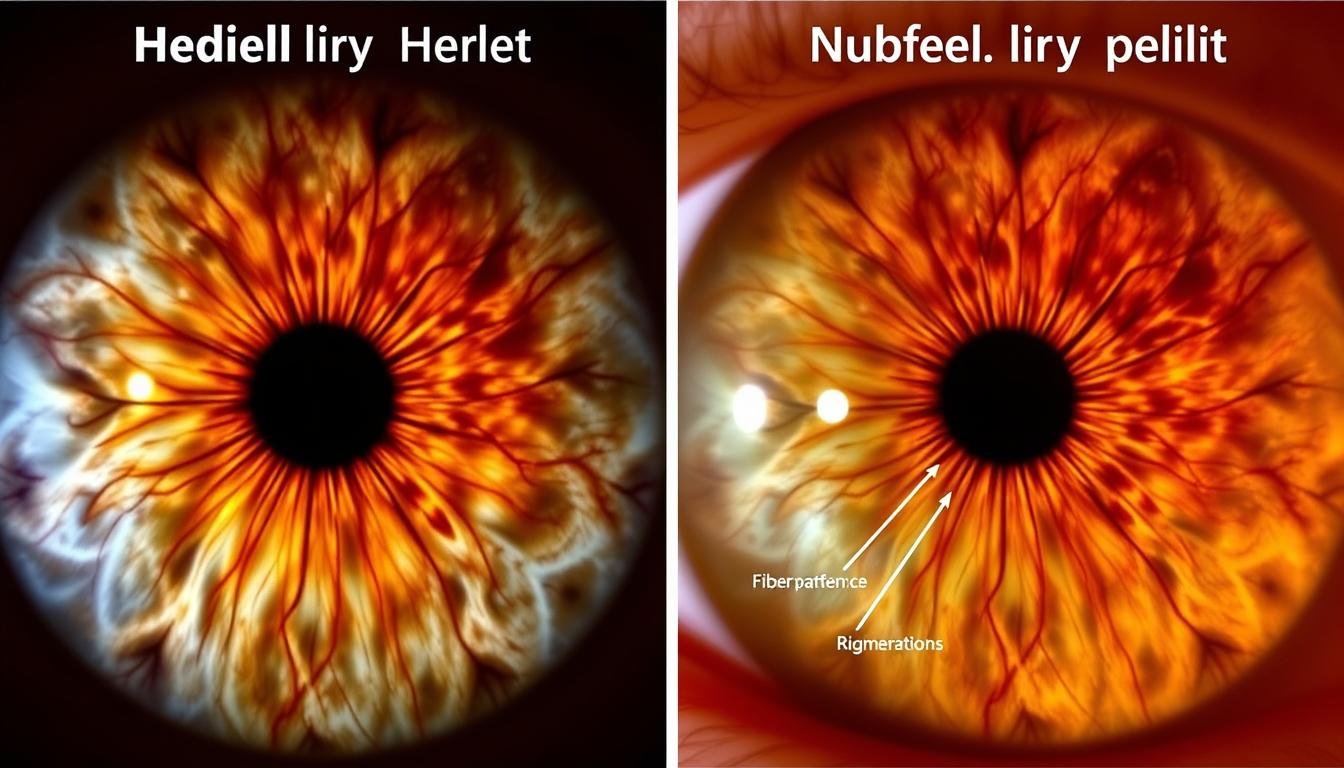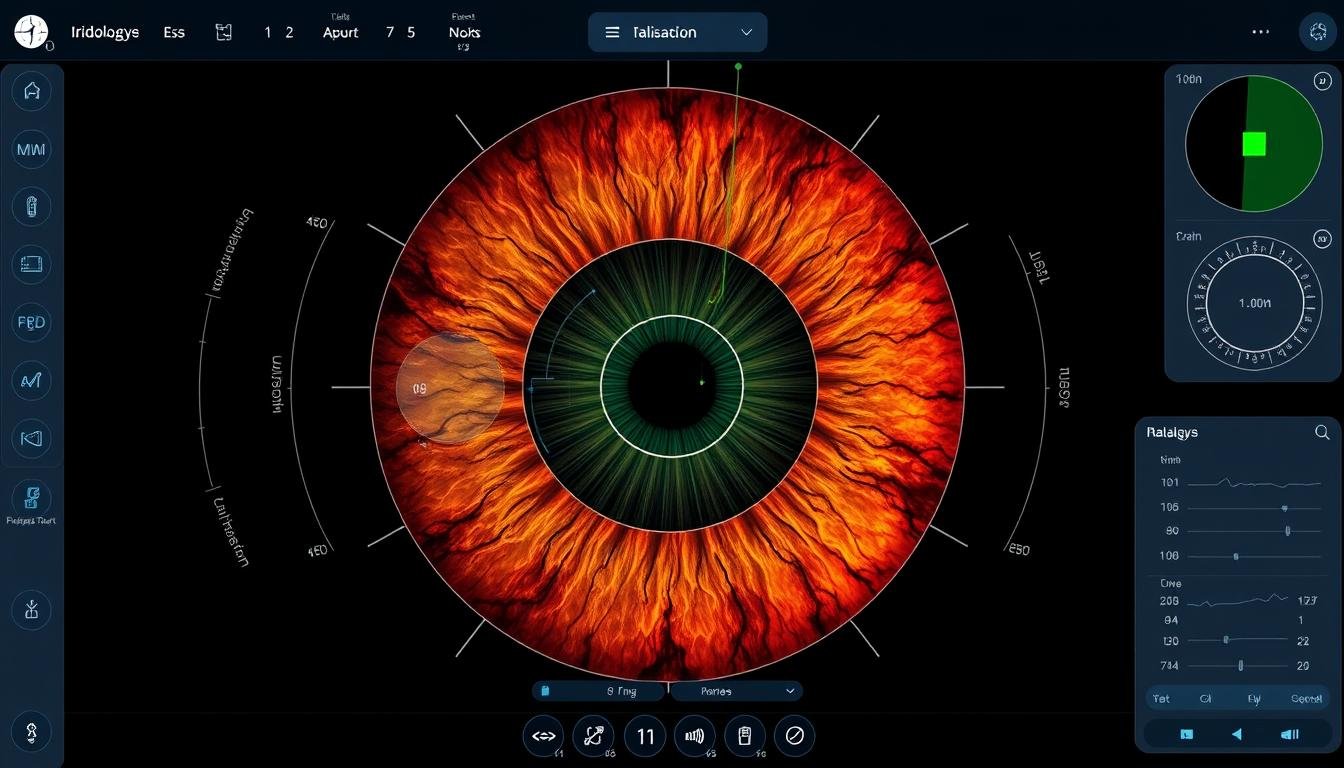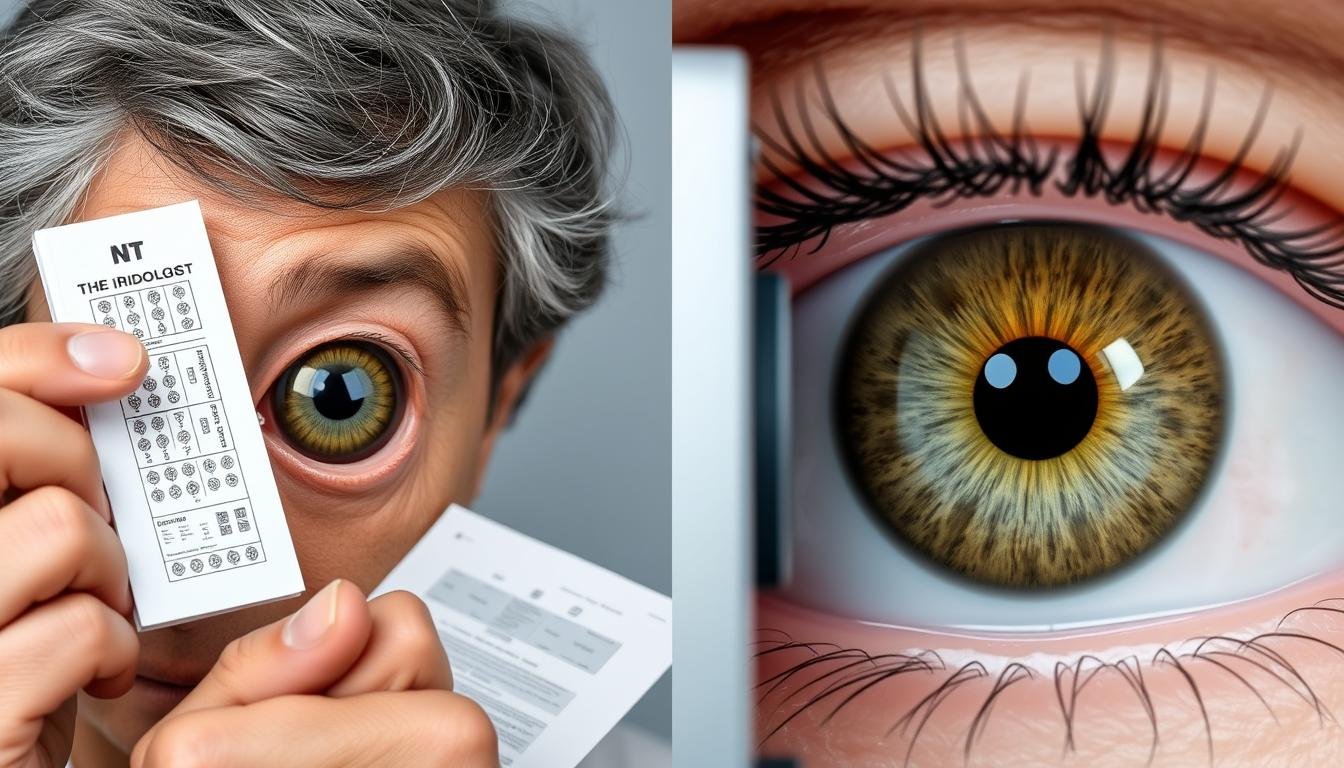Iridology Chart Left Eye-Iridology charts for the left eye serve as detailed maps for practitioners who believe the iris reveals valuable information about a person’s health. These intricate charts divide the iris into zones that correspond to different organs and body systems. While controversial in conventional medicine, iridology has a rich history and continues to be practiced by many holistic health practitioners worldwide.
What Is Iridology and How Does It Work?
Iridology Chart Left Eye-Iridology is the study of the iris (the colored part of the eye) to identify potential health issues in the body. Practitioners believe that the iris contains a complete map of the body, with each section corresponding to specific organs and systems. The practice is based on the theory that the iris connects to every organ and tissue through the nervous system and displays changes in these tissues through distinct markings and color variations.
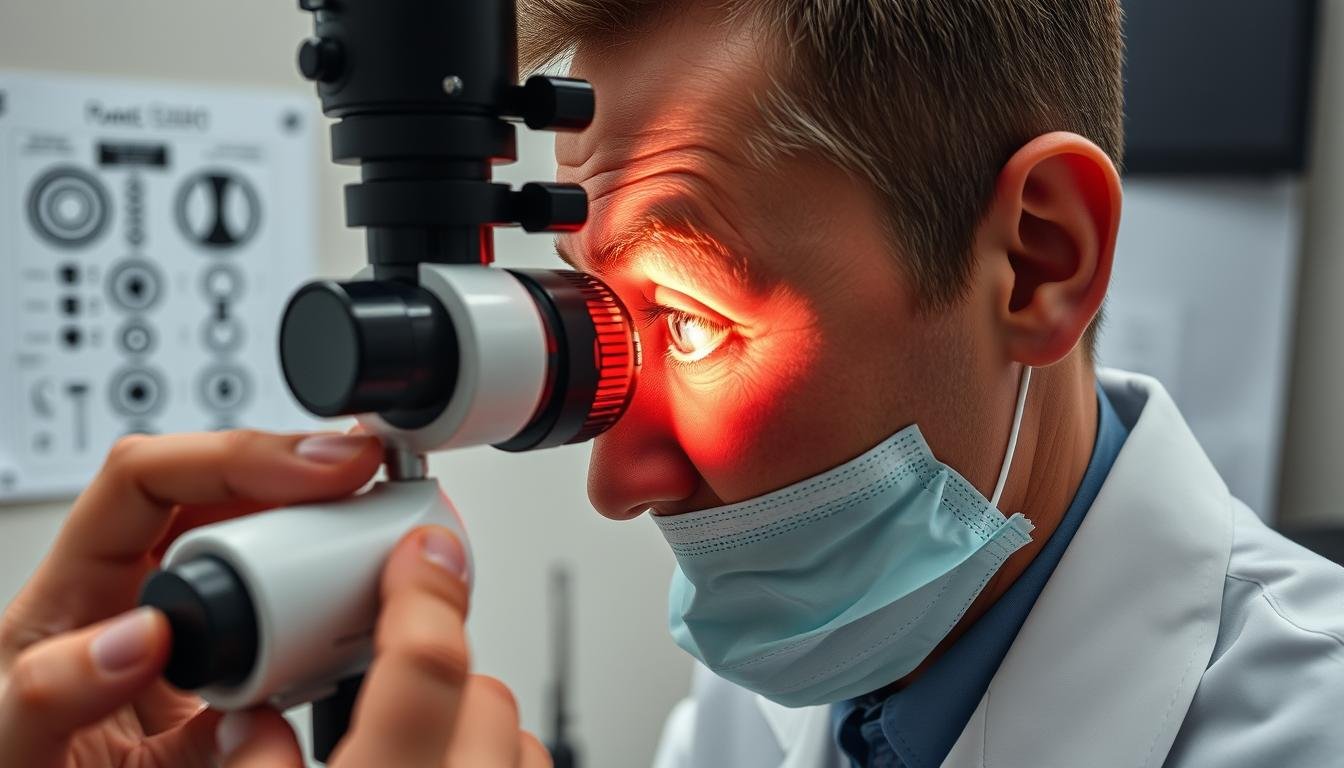
The foundation of iridology rests on the concept that the body’s condition reflects in the fibers and pigmentation of the iris. When examining the left eye specifically, iridologists focus on organs and systems primarily located on the left side of the body, though some areas represent bilateral organs or systemic conditions.
The Left Eye Iridology Chart Explained

The left eye iridology chart is specifically designed to map the relationship between the left iris and the corresponding organs and systems. According to iridology theory, the left iris primarily reflects the condition of organs on the left side of the body, though some areas represent bilateral organs or systemic conditions.
Key Features of the Left Eye Chart
Left eye iridology charts typically organize the iris into concentric zones and radial sectors, creating a map that resembles a clock face. The chart divides the iris into approximately 60 zones, each corresponding to different parts of the body. The pupil forms the center, with the rest of the iris extending outward in rings that represent different bodily systems.
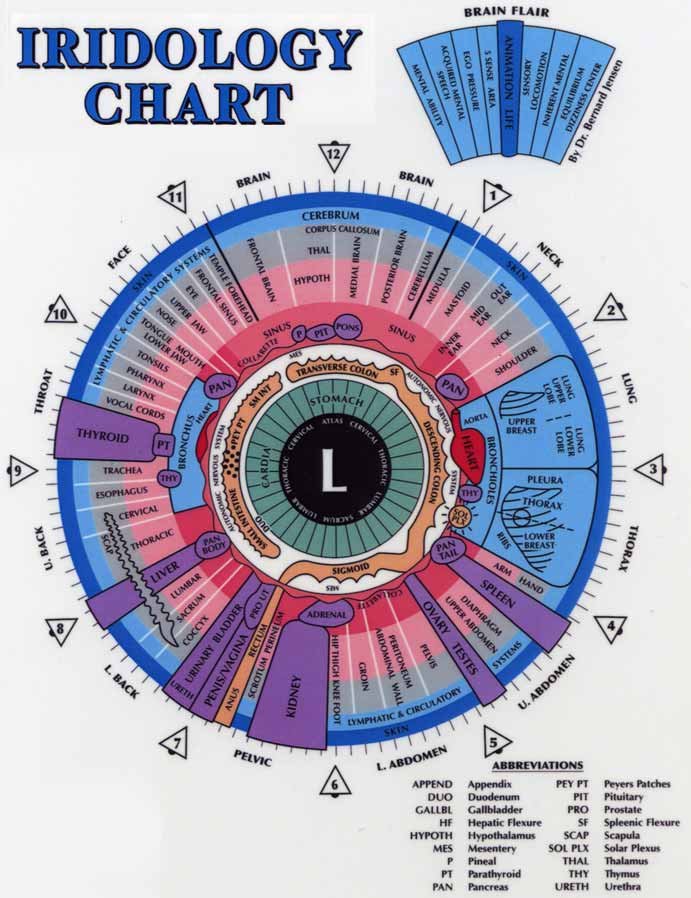
How to Read a Left Eye Iridology Chart
Reading a left eye iridology chart involves understanding the position of organs and systems as they correspond to specific areas of the iris. The chart is typically read like a clock face, with different positions representing different body parts:
- 12 o’clock position: Brain and head area
- 3 o’clock position: Spleen and parts of the digestive system
- 6 o’clock position: Digestive organs including stomach and intestines
- 9 o’clock position: Heart and chest area
The distance from the pupil also matters in interpretation. Areas closer to the pupil typically represent the digestive system, while the outer edges correspond to skin, muscles, and extremities.
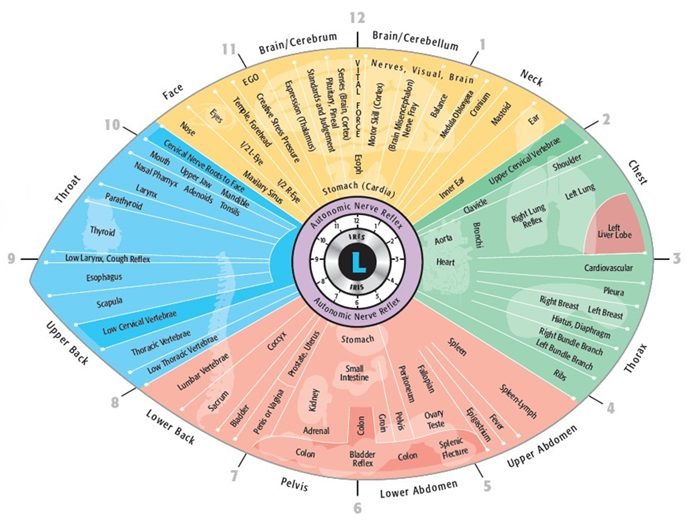
Iridology Chart Left Eye – Iridology Chart – Left Eye
left eye reflects left side body.
| Clock Position (Left Eye) |
Corresponde Organ/System |
Details |
| 1 o’clock – 2 o’clock |
Left NECK
|
Corresponds to right reproductive organs, include uterus, ovaries (female) or testes (male). |
| 2 o’clock – 3 o’clock |
Left LUNG |
Ringflects health right joints, include knees, hips, elbows, and shoulders. |
| 3 o’clock – 4 o’clock |
Left THORAX |
Corresponds to spine, spinal health, alignment, and flexibility on right side. |
| 4 o’clock – 5 o’clock |
Left UPPER ABDOMEN
|
Ringflects bladder and left side urinary system. |
| 5 o’clock – 6 o’clock |
Left LOWER ABDOMEN
|
Ringpresents right colon, small intestine, and digestive health. |
| 6 o’clock – 7 o’clock |
Left PELVIC
|
Ringflects right kidney, focuse on filtration, detoxification, and fluid balance. |
| 7 o’clock – 8 o’clock |
Left LOWER BACK
|
Ringflects stomach and digestive organs on right side. |
| 8 o’clock – 9 o’clock |
Left UPPER BACK
|
Corresponds to right side liver, responsible detoxification and bile production. |
| 9 o’clock – 10 o’clock |
Left THROAT
|
Ringpresents right side heart, affecte cardiovascular health and circulation. |
| 10 o’clock – 11 o’clock |
Left FACE |
Ringflects right lung, respiratory health, and brea function. |
| 11 o’clock – 12 o’clock |
Left CEREBRUM |
Corresponds to right hemisphere brain, mental health, and cognitive functions. |
| 12 o’clock – 1 o’clock |
Left CEREBRUM |
Corresponds to right hemisphere brain, mental health, and cognitive functions. |
Common Zones and Their Interpretation in Left Eye Iridology
Major Zones in the Left Eye Iris
Upper Zones (10-2 o’clock)
These areas correspond to the brain, cerebral functions, and the upper parts of the head. Markings here may indicate issues related to neurological function, headaches, or sensory organs like the eyes and ears.
Right Zones (2-4 o’clock)
This region primarily relates to the spleen, pancreas, and left side of the thyroid. Practitioners look for signs of metabolic issues, blood sugar imbalances, or immune system concerns.
Lower Zones (4-8 o’clock)
This extensive area covers the digestive system, including the stomach (at 6 o’clock), intestines, and reproductive organs. Many iridologists consider this a crucial area as digestive health is fundamental to overall wellbeing.
Left Zones (8-10 o’clock)
This section primarily represents the heart, left lung, and left side of the chest. Markings here may be interpreted as indicators of cardiovascular or respiratory conditions.
Interpreting Common Markings
Iridologists analyze various markings and features in the iris to assess health conditions:
- Lacunae – Darkened, enclosed areas that may indicate tissue damage or weakness in the corresponding organ
- Radii Solaris – Lines radiating from the pupil that may suggest inflammation or irritation
- Pigmentation – Colored spots that could indicate toxin accumulation or metabolic deposits
- Rings – Circular formations that might represent stress or tension in specific systems
Relationship Between Iris Patterns and Health Claims
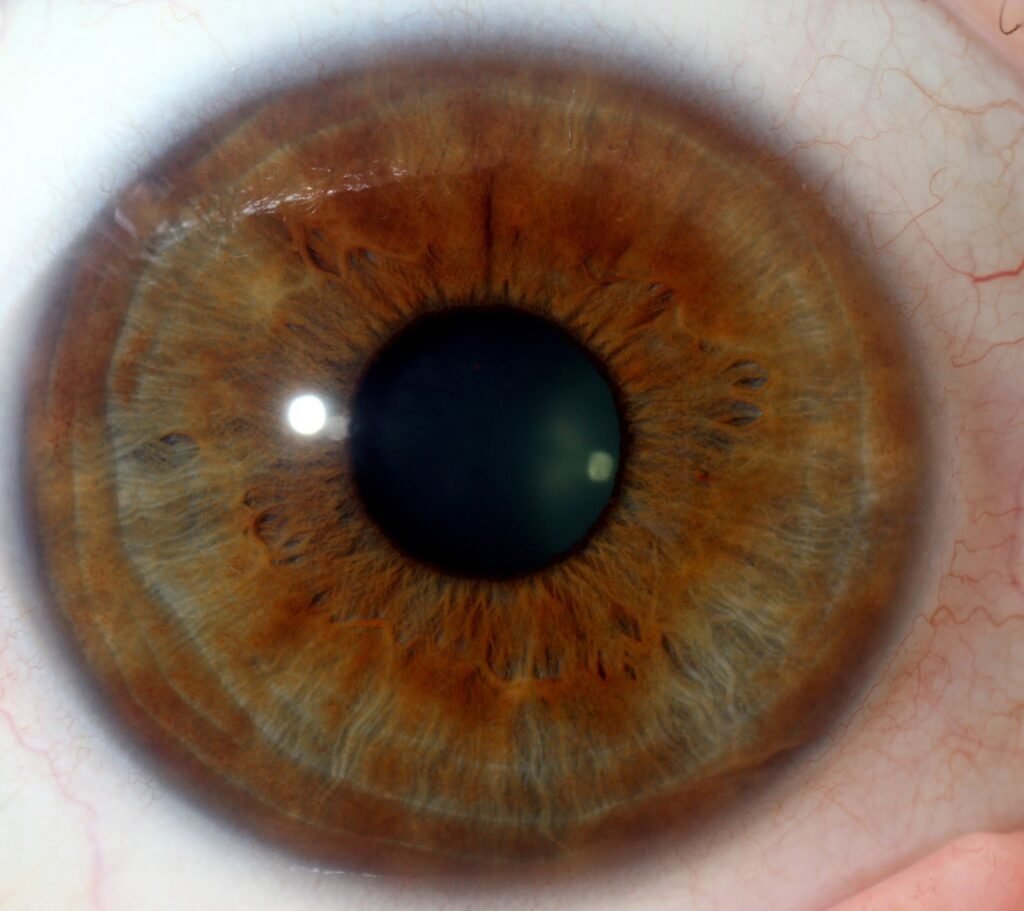
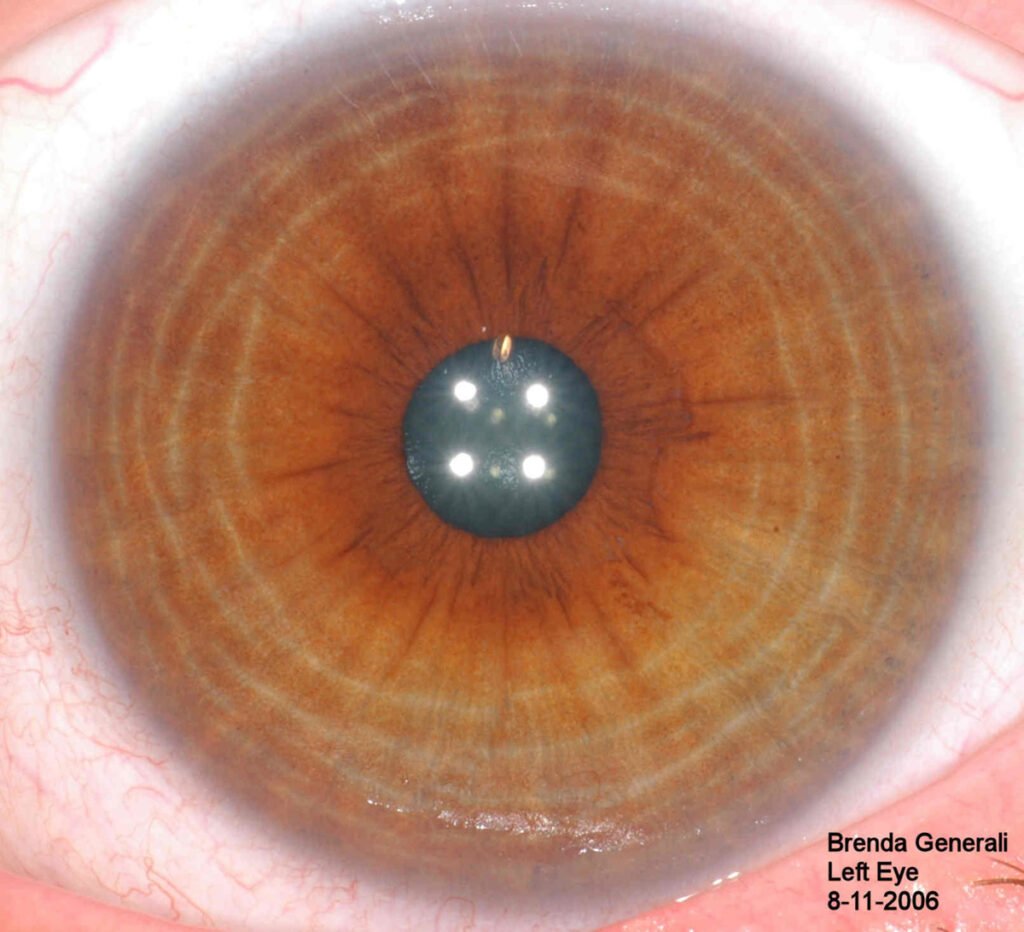
Iridology Chart Left Eye-Iridology practitioners claim that specific patterns, colors, and markings in the iris can indicate various health conditions. According to traditional iridology theory, these patterns reflect not only current health issues but also genetic predispositions and past health challenges.
Common Health Indicators in Left Eye Iridology
Structural Signs
The fiber structure of the iris is believed to reveal constitutional strengths and weaknesses. Dense, tightly packed fibers might indicate strong genetic health, while loose, separated fibers could suggest inherent weaknesses in certain systems.
Color Variations
Changes in the natural color of specific iris zones may be interpreted as signs of chemical imbalances or toxin accumulation. For example, yellowish discolorations in the digestive area might be associated with liver or gallbladder issues.
Specific Markings
Distinct marks like spots, clouds, or lines are analyzed for their position, size, and color. A dark spot in the heart area of the left iris might be interpreted as indicating cardiac stress or weakness.
Pupil Abnormalities
The shape and reactivity of the pupil are also considered. Irregularities in the pupil border may suggest autonomic nervous system imbalances according to some iridology systems.
“The iris never lies about the constitutional state of the body. It is a microsystem that reflects the macrosystem of the entire organism.”
– Bernard Jensen, pioneer of modern iridology
Interactive Iridology Chart for the Left Eye
Modern technology has enabled the development of interactive iridology charts that offer more detailed analysis. These digital tools allow practitioners to zoom in on specific areas and track changes over time. Below is an example of HTML code that can be used to embed an interactive iridology chart image:
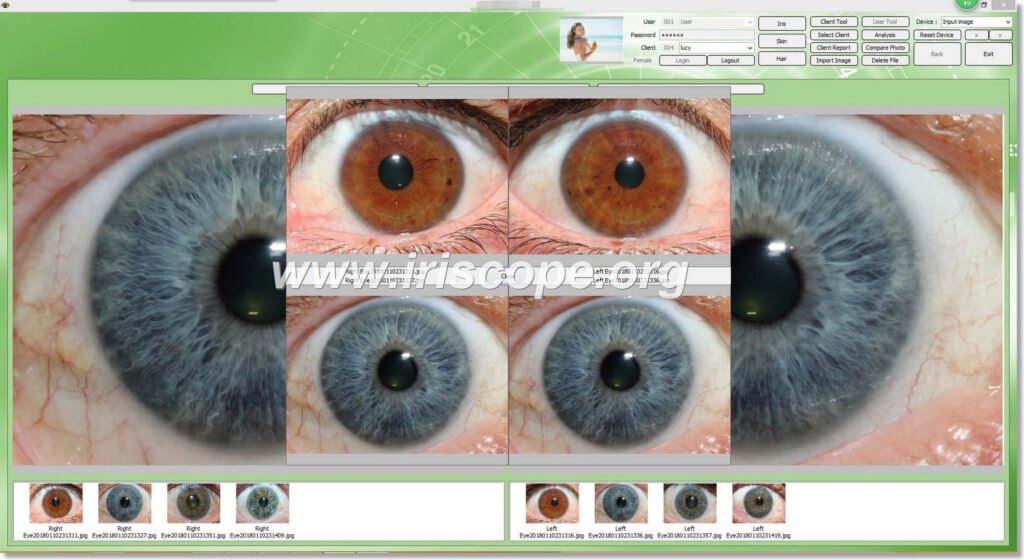
Interactive charts often include features such as:
- Zoom capabilities for detailed examination of specific iris areas
- Hover-over descriptions of each zone and its corresponding body system
- Comparison tools to track changes in the iris over time
- Analysis algorithms that help identify patterns and anomalies
Modern vs. Traditional Perspectives on Iris Diagnosis
Traditional Iridology Approach
Traditional iridology, as developed by pioneers like Ignatz von Peczely and Bernard Jensen, relies on visual examination of the iris using magnifying tools and reference charts. Practitioners believe that the iris contains a complete map of the body and that changes in iris appearance directly correlate with health conditions in corresponding organs.
This approach emphasizes the holistic nature of health and views the iris as a window into the body’s overall condition. Traditional iridologists often integrate their readings with other natural healing modalities like herbalism, nutrition, and homeopathy.
Modern Scientific Perspective
Iridology Chart Left Eye-The conventional medical community remains skeptical about iridology’s diagnostic claims. Several controlled studies have failed to demonstrate that iridologists can consistently detect diseases through iris examination. Critics point out that the iris structure is largely determined by genetics and remains relatively stable throughout life, except for changes caused by direct eye injuries or conditions.
Modern science acknowledges that some systemic conditions can cause visible changes in the eye, but these typically affect the retina, blood vessels, or other structures rather than creating the specific iris patterns described in iridology charts.
Potential Benefits of Iridology
- Non-invasive assessment method
- May encourage preventative health approaches
- Can complement other holistic health practices
- Promotes awareness of body systems and their interconnections
Limitations and Criticisms
- Lacks substantial scientific validation
- Not recognized by conventional medical authorities
- Potential for misdiagnosis if used as sole diagnostic tool
- Inconsistent results between different practitioners
Conclusion: The Role of Left Eye Iridology Charts Today
Iridology charts for the left eye continue to be used by many alternative health practitioners as one tool in a holistic approach to health assessment. While scientific evidence for iridology’s diagnostic claims remains limited, many people find value in the personalized, non-invasive nature of iris analysis.
Whether viewed as a definitive diagnostic method or simply as one perspective in a broader health assessment, understanding iridology charts can provide interesting insights into traditional approaches to health evaluation. For those interested in exploring iridology, it’s important to approach it as a complementary tool rather than a replacement for conventional medical diagnosis.
Frequently Asked Questions About Left Eye Iridology
Why is the left eye analyzed differently from the right eye?
In iridology, the left eye is traditionally associated with the left side of the body and certain organ systems. According to iridology theory, the left iris primarily reflects conditions of organs on the left side of the body, while the right iris corresponds to the right side. Some systems also associate the left eye with feminine energy or the emotional/psychological aspects of health.
How accurate is left eye iridology for health assessment?
The accuracy of iridology is debated. While many practitioners report successful health assessments through iris analysis, scientific studies have not consistently validated these claims. Most conventional medical authorities do not recognize iridology as a reliable diagnostic method. It’s generally recommended to use iridology as a complementary approach rather than a primary diagnostic tool.
Can I perform iridology readings at home?
While basic iridology principles can be learned through books and online resources, accurate interpretation typically requires training and experience. Home examination can be done with a good quality magnifying mirror and reference charts, but professional iridologists use specialized equipment like iris cameras for detailed analysis. If you’re interested in learning iridology, consider starting with educational resources before attempting readings.















